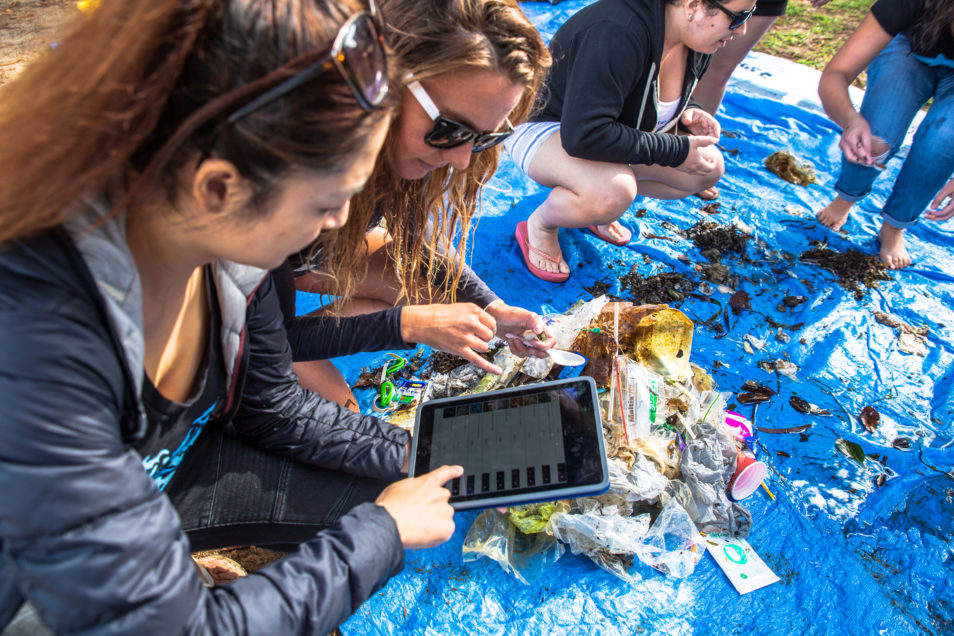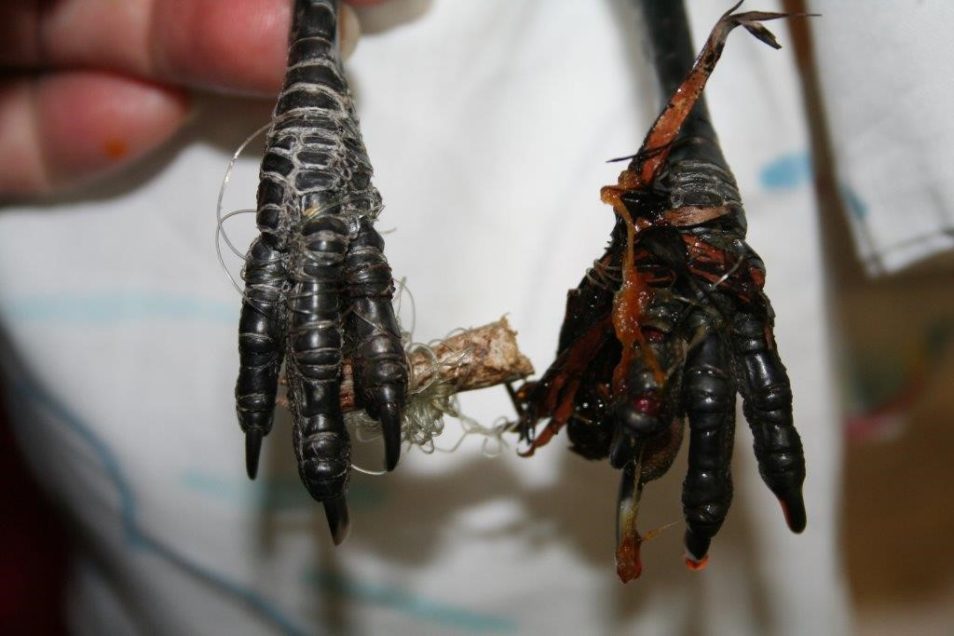
Rubbish crusaders: the global citizen science community coming together to remove marine pollution and report the data from land and sea. Image: Emy Dossett Salty See
Imagine you are walking along a beach. You spot pieces of rubbish – a plastic bag, a metal can, or cigarette butts. Would you find these same items just steps away below the ocean waves?
Our scientists, in collaboration with Project AWARE®, and Ocean Conservancy, analysed 33.5 million pieces of rubbish spanning 86 countries from both land and the seafloor to find out.
Together they conducted the largest global analysis of land and seafloor debris from two global, volunteer-based surveys: Project AWARE’s Dive Against Debris® seafloor survey and Ocean Conservancy’s International Coastal Cleanup of beach debris.
The rubbish mismatch
The research had some interesting findings. It shows an overall mismatch between what pollution ends up on our coasts, compared to what sinks to the seafloor. On land, the most common litter includes cigarettes, plastic fragments, and food wrappers.
The most common types of debris on the seafloor were fishing line, plastic fragments, and metal cans.
The mismatch is influenced by what the item is made of, and whether it sinks or floats. Buoyancy, as well as the tendency to snag, most closely predicts whether an item found on the beach will also appear on the seafloor.

Marine debris can be a hazard for animals. They can become entangled by it or swallow it. Image: Pelican and Seabird Rescue Inc.
Thirsty for solutions
Analysing both land and seafloor surveys means we can get a bigger and better picture of what debris ends up where and what factors influence its distribution.
Most of the pollution recorded (seven out of the 10 items) were wholly or partially comprised of plastics. These included plastic bags, plastic fragments, plastic beverage bottles and food wrappers.
This research highlights the benefits of reducing, reusing, recycling and avoiding single-use items. By doing so, we can reduce, and ultimately prevent, plastic ending up in our environment.
Marine debris can injure or kill marine life, suffocate critical ecosystems, is detrimental to tourism, compromises important fish stocks, and can potentially pose a health hazard to humans.
Interestingly, the most common debris items recorded are associated with the beverage industry. Knowing these items are turning up as rubbish along our coasts and in our oceans is important. It means we can create targeted strategies for waste management. For example, we’ve already shown that container deposit legislation can reduce drink containers entering the ocean by 40 per cent.
With the ongoing support of the global community through citizen science, we can gauge what rubbish is out there and reduce the amount of litter. That’s a win-win.

Some items you can find commonly both on land and the seafloor. Cigarettes are the most common debris you can find on land. Fishing line is the most common pollution you can find on the seafloor.


22nd May 2020 at 4:29 pm
Macro plastics we can deal with , given the political will . Micro and Nano plastics are a different situation . These are a far bigger problem than Macro plastics . They originate from many sources , from the breakdown of Macro plastics , from the wearing away of tyres which are 60 -70 % plastic , from the wearing away of footwear soles which are mostly plastic , from the wearing away and washing of synthetic clothing , from the wearing away of paint which is mostly plastic , from party glitter , from microbeads in sunscrean and cosmetics and probably other sources that I don’t know about . What can possibly be done to remove these particulates of plastic from the environment . There’s not a cubic meter of ocean water that doesn’t contain some level of Micro and/or Nano particulates of plastic . As far as I can see this situation is irreversible and is only increasing in volume .
22nd May 2020 at 3:13 pm
What about the debris we can’t see – ie all the chemicals going into our waterways & oceans – has anyone done any analysis on these?
20th May 2020 at 7:19 pm
Humans are such self-centred grubs. Fishermen don’t think about their responsibility for fishing line, picnickers just leave their rubbish even in pristine places (that’s what attracted them in the first place) and most smokers just drop butts anywhere (although it is better than years ago). Every human has to think about their own impact and take responsibility for their own rubbish.
20th May 2020 at 11:28 am
I used to be in favour of a container deposit system until a visit to South Australia. Nothing in tourist literature, no sign of any place except where someone else got my money, notably receptacles at Keith. But I have now witnessed NSW’s and I want one for Victoria.